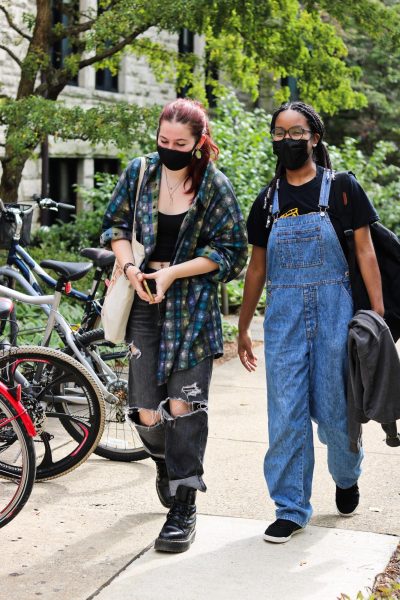Professional Journalists Use Student Newspapers to Fuel Outrage Economy
On Dec. 10, one week before Solarity, I wrote an article about how to make concerts safer and more accessible for students. Soon after, I was trending in right-wing communities as hundreds of commenters on all social media sites imaginable hurled insults, racial slurs, and even calls for expulsion at me.
What started as an article advocating for a safe environment at concerts somehow morphed into me apparently being pro-segregation and calling for white students to never attend concerts again. My piece picked up traction because of commentary from notable right-wing newspapers such as The College Fix and The Washington Examiner. The Washington Examiner reposted my story on its Twitter seven times. Of course, I welcome any feedback for my writing. However, there is a fine line between constructive criticism and using my article as bait for harassers and fuel for the outrage economy, which is when journalists severely distort a story to upset and anger their main audience. These newspapers chose the latter option. They mainly paraphrased my writing and added information about the Gibson’s Bakery scandal, an incident that happened five years before I started as a student at Oberlin. And none of them reached out for comment from the Review.
Unfortunately, not much has changed since the controversial national coverage of an article about cultural appropriation by campus dining, published in the Review in 2015. The article addressed how campus dining was serving pulled pork sandwiches, which they labeled as Bánh mì, despite not resembling the traditional Vietnamese sandwich at all. This quickly became distorted into a headline that Oberlin students were crying that sushi was racist, and the story got picked up by newspapers such as The New York Times and The Washington Post. Even Oberlin alumna Lena Dunham offered her take on the situation, agreeing with the student who wrote the article. More recently, in 2019, Vimal Patel wrote an article on this incident in The Chronicle of Higher Education, titled “Colleges Are Losing Control of Their Story. The Banh-Mi Affair at Oberlin Shows How.” At the very end, Patel included a quote from Ferd Protzman, the lecturer who taught the Rhetoric and Composition class where the Bánh mì article was produced.
“The thing that was most disturbing to me as a journalist is that people at mainstream publications just took the narrative that grew on these ideological blogs and basically just repeated it,” Protzman said. “No one called. No one.”
The outrage economy is nothing new. Reflecting on the Bánh mì article in 2019, Zack Beauchamp from Vox said, “It’s a story about how parts of the national media have developed an unhealthy relationship with college campuses, treating the low-stakes controversies that characterize students as far more important than they actually are.”
As long as right-wing newspapers exist, there will always be one story from a college newspaper that blows up and gains attention.
Another contributing factor to the online abuse I received was a commenting app called Disqus. Disqus has some guidelines that try to restrict hate speech, and the program is used on a diverse amount of websites. However, people most frequently utilize Disqus on right-wing newspapers such as Breitbart, where most of the commentators for my article were coming from.
The Oberlin Review website also uses Disqus. Although the Review turned off comments a long time ago, a software glitch has allowed Disqus to stay on, enabling readers to continue posting comments on the website. It’s also important to note that on average, Review articles do not get any comments. It’s only when there is an opinion from mainly LGBT+ students or students of color where hateful comments are left. This not only included the Bánh mì article, but also articles about the life of international students, a call for diversifying authors, and feeling unsafe in Baldwin Cottage. Just because an article is trending at number one on the Review’s website doesn’t necessarily mean that the article is popular among students.
Although this mistake was unintentional, allowing Disqus on the Review’s website has caused a lot of harm to student journalists. This is more than a matter of free speech; I saw several comments that were blatant death threats to other students journalists. I managed to ignore most of the comments posted about my article. But at the peak of its popularity, I genuinely worried that I would get doxxed. Even on Oberlin’s campus, I would still feel scared about going outside. I appreciate The Oberlin Review for removing Disqus from the website, but I believe this could have easily been prevented if someone looked at how certain articles gained so much traction in the first place.
I know that when this article is published, there’s a good chance that I am putting myself at risk of more online harassment. But I’m doing this because the Oberlin community, especially future and current journalists, need to be aware of what has happened to me and other students and most importantly how the outrage economy’s fires can be fueled.




